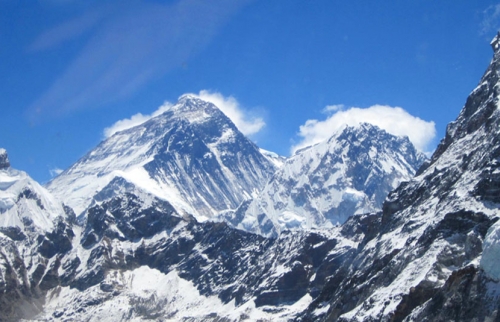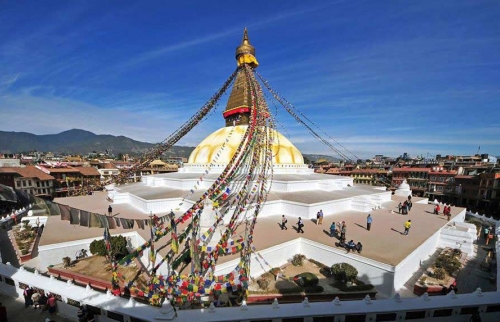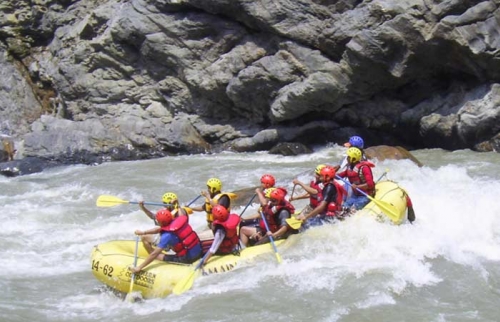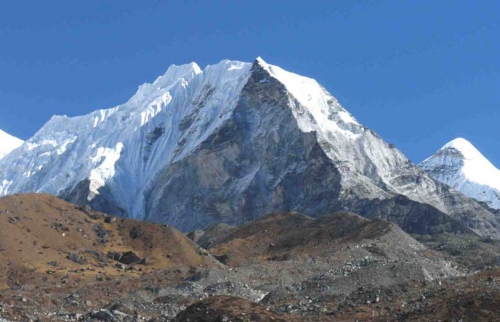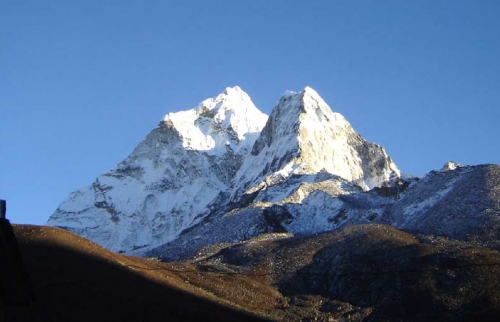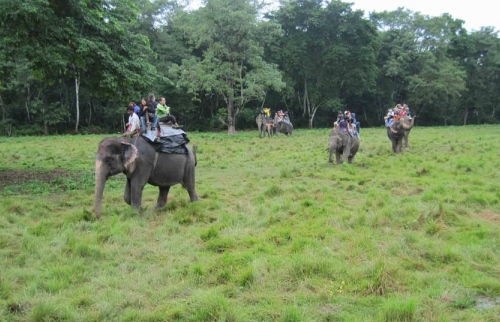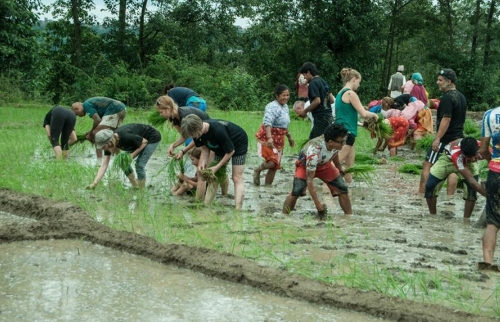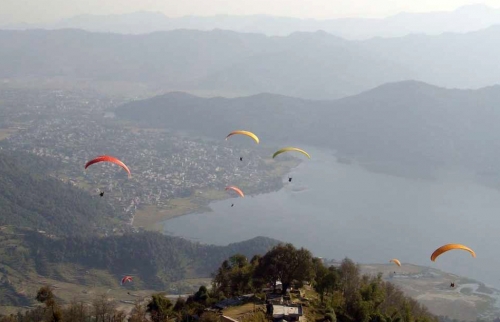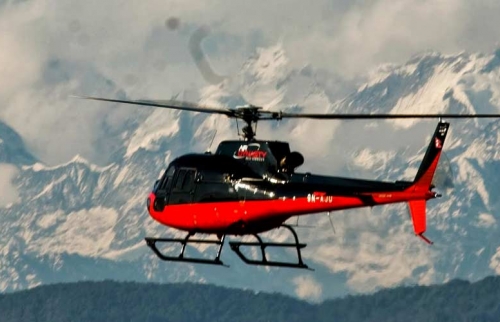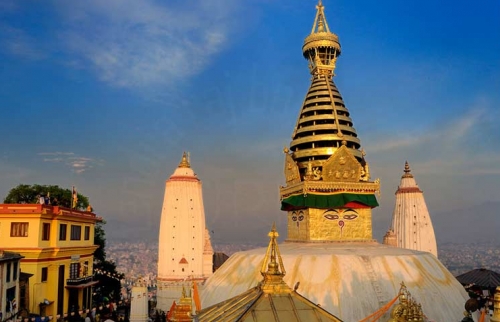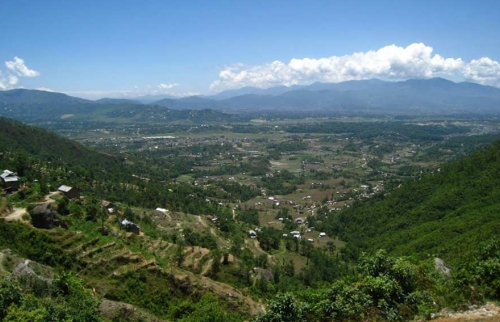Nepal
Nepal has always been an independent and sovereign country with glorious history, culture and tradition that date back to time immemorial. Before the campaign of national integration was launched by King Prithvi Narayan Shah, the Kathmandu Valley was ruled by the Malla Kings, whose contributions to art and culture are indeed great and unique. Nepal is one of the founder members of South Asian Association for Regional Cooperation (SAARC).
Weather Climate of Nepal:
God VishnuNepals topographical extremities govern the climate condition of Nepal. Tropical, Temperate and tundra types of climate are respectively encountered in its Tarai belt, midland hills and the alpine region. Therefore people say migrating birds do not have to leave Nepal. Nepals weather is generally predictable and pleasant.
The year is divided into 4 different seasons in Nepal winter (December-February), spring (March-May), monsoon (Jun- August) and autumn (September-November). The best period to visit the country for plant lovers is during spring when the flowers are in full bloom. The mountain slopes are covered with beautiful and colorful flowers. Spring season commences from early March and continues until late May. Even though the days are clear haze disturbs the mountain views. Late May, and the downpour begins. It continues till late August. Come September and the autumn season begins. It continues till late November. With temperate climate, clear blue skies and extraordinary mountain views it is the best season to visit the country. Winter begins in late November and continues till late February.
Trekking in Nepal can be undertaken throughout the year. There are four seasons in Nepal. Each season has its distinct attractions to offer. The seasons are classified as follows:
Autumn (Sept-Nov) This season offers excellent weather and tantalizing mountain views.
Winter (Dec-Feb) This season is noted for occasional snowfall only at higher elevations. Hence it is ideal for trekking at lower elevations, generally below 3000 meters.
Spring (March-May) Different varieties of wild flowers, specially the rhododendrons make the hillside above 5000 meters a haunting paradise during this season. It is mildly warm at lower elevations and at higher elevation over 4000 meters the mountain views are excellent and temperature is quite moderate.
Summer (Jun-Aug) Summer months really continue up to mid-September making travel wet and warm. These times are blessed for the keen botanist as the higher valleys and meadows blossom with flowers and lush vegetation.
It is recommended to carry insect repellent when trekking during summer months.
The best Trekking season in Nepal is during spring autumn seasons February to May September to November. Warm days make this season favorable for trekking Expeditions. The monsoon seasons are June, July and August. During this period, trekking is possible in the Mustang, Dolpo, Humla, Jumla, Rara Lake of Nepal and some Trekking areas in Tibet.
Water
In major cities boiled and filtered water as well as mineral water is available in most of the hotels and restaurants. Elsewhere, it is advisable to use water sterilization tablets or stick to tea and soft drinks.
Working Hours
Government offices are open from 9 am to 5 p.m. from Monday through Friday in the Kathmandu Valley. Outside the Kathmandu Valley it opens on Sunday also. Banks are open from Sunday through Friday from 10 am to 3.30 pm. open until 12 pm only on Friday. Most Business offices are open from 10 am to 5 p.m. Sunday through Friday. Embassies and international organizations are open from 9 am to 5 pm Monday through Friday. Most shops open after 10 am and close at about 8 pm and are usually closed on Saturdays.
Holidays
Nepal observes numerous holidays, at the least a couple in a month. So please check the holiday calendar. Government offices observe all the national holidays and banks observe most of them. Businesses observe major holidays only. Government and most other offices work six days a week. Saturday is the official weekly holiday when most of the shops are closed. Museums remain closed on Tuesdays and other Govt. holidays.
Road Transport
Kathmandu is connected with India through the fertile plains of the Terai by the most picturesque highways. Visitors are permitted to drive their own cars but their vehicles must possess an international carnet. There are regular bus services to Kathmandu from all the border points. The interior parts of the country are also linked with a number of motor able roads.
Railway Transport
Nepal Janakpur-Jayanager Railway (NJJR) operates afreight and passenger service in the eastern Terai.
Getting around
Meter taxis are easily recognizable by the taxi sign and black number plates and can be hailed off the street. Micro buses, cheaper than taxis are also available. Battery run EV tempos are also available. No tip is expected. There are regular bus services within the three cities of the Kathmandu Valley operating from Ratna Park (old bus terminal). Similarly, scheduled bus services for outside the valley operate from the Gongabu Bus Terminal which is located near Balaju. In addition, one can also hire mountain or motor bikes at nominal rates.
Telephone Services
Telephone, fax, telex and telegraph services are available at the Nepal Telecommunications Corporation at Tripureshwar. Hotels and private communications centers provide long distance telephone. For calling from outside, country code for Nepal is 977 and the area code for Kathmandu is 1.
Internet Services
Several Internet cafes and communication centers have opened up in the Valley and around the country in the past few years. Visitors only have to find a place they are most comfortable in to use the facilities to keep in touch with home. E-mail and Internet services are also offered by hotels.
Media
Nepali media has sped light years ahead in just a few years time and what used to be a controlled and tight knit community, is so no more. The government audio and television news networks are Radio Nepal and Nepal Television respectively. However, numerous FM radio stations and upcoming regional television stations are dominating the market. Major Nepali daily newspapers are Gorkhapatra and Kantipur, while the English dailies are The Rising Nepal, The Kathmandu Post and The Himalayan. A number of other newspapers and magazines are also available.
Clothing
Warm clothing are required from November till February and tropical wear from March till October.
Some dos and donts
- The form of greeting in Nepal is NAMASTE and is performed by joining the palms together.
- Before entering a Nepalese home, temple, and stupa remember to remove your shoes.
- Be careful not to use your spoon, fork or a hand being used for your eating to touch others food, plate, cooking utensil or the serving dish. Do not eat from other peoples plate and do not drink from other peoples bottle or glass. It is considered impure by the Nepalese.
- Never touch anything with your feet. This is considered an offence among Nepalese.
- While traveling dress appropriately. Women should specially avoid dressing in skimpy outfits.
- Seek permission first before entering a Hindu temple. Many Hindu temples do not allow westerners or non-Hindus to enter.
- Leather articles are prohibited to be taken inside the temple precinct.
- Walking around temples or stupas is traditionally done clockwise.
- Take photographs only after receiving permission for the object or person being photographed.
- Public displays of affection between man and woman are frowned upon. Do not do something that is totally alien to our environment.
- Remember, many times, when a person shakes his head from left to right, he may mean Yes.
- Develop a genuine interest to meet and talk to Nepalese people and respect their local customs.
Nepal Activities
-
Nepal Trekking
44 Package(s)Trekking in Nepal is one of the most popular tourism activities. It is one of...
-
Nepal Tours
4 Package(s)Tour in Nepal is one another popular tourism activities in the country, where the travelers...
-
River Rafting in Nepal
7 Package(s)Rafting in Nepal is one of the most popular tourism activities in the country as...
-
Peak Climbing in Nepal
12 Package(s)Peak climbing is one of the popular and challenging trips in Nepal. Peak climbing has...
-
Expedition in Nepal
5 Package(s)Expedition in Nepal is considered to be one of the most challenging but is the...
-
Jungle Safari in Nepal
4 Package(s)Jungle safari in Nepal is one another the most amazing trips in Nepal, as it...
-
Helicopter Tours in Nepal
3 Package(s)Taking a helicopter tour over the Himalayas is a truly magnificent adventure, filled with awe-inspiring...
-
Pilgrimage Tours in Nepal
5 Package(s)Nepal is known as the abode of God simply because of the temples and shrines...
Related
Company Info
Client Reviews

Just finished an amazing six day trek to Poon hill and Annapurna region with our excellent guide Dhana! Saw amazing sights and we were looked after very very well! Booked
Read More
